Bombinatoridae
Bombinas and barbourulas
David Cannatella- Barbourula
- Barbourula busuangensis
- Barbourula kalimantanensis
- Bombina
- Bombina bombina
- Bombina fortinuptialis
- Bombina lichuanensis
- Bombina maxima
- Bombina microdeladigitora
- Bombina orientalis
- Bombina pachypus
- Bombina variegata
Introduction
This family includes only two genera, Barbourula and Bombina. Barbourula occurs in the Philippine Islands (Barbourula busuangensis) and Borneo (Barbourula kalimantanensis). The approximately eight species of Bombina are found in Europe, western Asia, China, Vietnam, and Korea.
Bombina are warty, aquatic toads, and tend to be gregarious. The vocal behavior of some Bombina is unusual in that the call is produced during inhalation rather than exhalation as in other frogs. They lay pigmented eggs in ponds. The tadpoles have beaks, two upper and three lower rows of denticles, and a median spiracle (typical Orton Type 3).
Species of Bombina have bright red or yellow mottling on the venter. The German word Unke means toad. Bombina exhibit an "unken reflex" when bothered. The animal will arch its back and limbs to expose the bright belly, and may turn over on its back. This acts as a warning to predators. Not surprisingly, the skin toxins of Bombina are distasteful.
Barbourula are not as brightly colored but have webbed fingers in addition to webbed toes. Tadpoles of Barbourula are unknown. Both genera have flattened bodies.
Fossil Bombina are known from the Pliocene to the Pleistocene; there are no fossils of Barbourula.
Discussion of Phylogenetic Relationships
In most classifications, Bombina and Barbourula have generally been placed in the Discoglossidae. Cannatella (1985) presented a phylogenetic analysis that indicated the Discoglossidae was paraphyletic. Synapomorphies of Discoglossanura (Ford and Cannatella, 1993) reject the monophyly of "Discoglossidae" as traditionally used. Ford and Cannatella (1993) formalized this by resurrecting the family Bombinatoridae for Barbourula and Bombina. They considered Bombinatoridae to be the node-based name for the most recent common ancestor of Bombina and Barbourula, and all its descendants. Synapomorphies of Bombinatoridae are an expanded flange of the quadratojugal and the presence of endochondral ossifications in the hyoid plate; these are not parahyoid bones, which are also present (Cannatella, 1985; Clarke, 1987).
Almost all workers have placed Alytes, Discoglossus, Bombina, and Barbourula in Discoglossidae, although the dissimilarity of Alytes and Discoglossus, on one hand, and Bombina on the other has often been noted (e.g., Lanza et al., 1976). In contrast, the recent study of Hay et al. (1995) found Bombina orientalis and Discoglossus pictus to be closest relatives; this supports the traditional arrangement of the Discoglossidae.
Griffiths (1963) stated that the diagnostic feature of "Discoglossidae" (including Bombinatoridae and Discoglossidae) is a triradiate sternum. However, this type of sternum is also present in Leiopelma, and is a synapomorphy of Leiopelmatanura.
References
Cannatella, D. C. 1985. A phylogeny of primitive frogs (archaeobatrachians). Ph.D. Dissertation, The University of Kansas, Lawrence.
Clarke, B. T. 1987. A description of the skeletal morphology of Barbourula (Anura: Discoglossidae), with comments on its relationships. J. Nat. Hist. 21:879-891.
Ford, L. S., and D. C. Cannatella. 1993. The major clades of frogs. Herp. Monogr. 7:94-117.
Griffiths, I. 1963. The phylogeny of the Salientia. Biological Reviews 38:241-292.
Hay, J. M., I. Ruvinsky, S. B. Hedges, and L. R. Maxson. 1995. Phylogenetic relationships of amphibian families inferred from DNA sequences of mitochondrial 12S and 16S ribosomal RNA genes. Mol. Biol. Evol. 12(5):928-937.
Lanza, B., J. M. Cei, and E. G. Crespo. 1976. Further immunological evidence for the validity of the family Bombinidae (Amphibia, Salientia). Monit. Zool. Ital. (NS) 10:311-314.
Title Illustrations

| Scientific Name | Bombina orientalis |
|---|---|
| Image Use |
 This media file is licensed under the Creative Commons Attribution-ShareAlike License - Version 3.0. This media file is licensed under the Creative Commons Attribution-ShareAlike License - Version 3.0.
|
| Copyright |
© 1995 David Cannatella

|
| Scientific Name | Bombina orientalis |
|---|---|
| View | ventral |
| Image Use |
 This media file is licensed under the Creative Commons Attribution-ShareAlike License - Version 3.0. This media file is licensed under the Creative Commons Attribution-ShareAlike License - Version 3.0.
|
| Copyright |
© 1995 David Cannatella

|
| Scientific Name | Bombina bombina |
|---|---|
| Location | Romania |
| Specimen Condition | Live Specimen |
| Identified By | Horia Bogdan |
| Copyright |
© Horia Bogdan

|
| Scientific Name | Bombina bombina |
|---|---|
| Location | Romania |
| Specimen Condition | Live Specimen |
| Identified By | Horia Bogdan |
| Copyright |
© Horia Bogdan

|
About This Page
If you are interested in authoring or co-authoring the page for this taxon, or some part of it (even a species), contact David Cannatella.
David Cannatella

University of Texas, Austin, Texas, USA
Correspondence regarding this page should be directed to David Cannatella at
Page copyright © 1995 David Cannatella
 Page: Tree of Life
Bombinatoridae. Bombinas and barbourulas.
Authored by
David Cannatella.
The TEXT of this page is licensed under the
Creative Commons Attribution License - Version 3.0. Note that images and other media
featured on this page are each governed by their own license, and they may or may not be available
for reuse. Click on an image or a media link to access the media data window, which provides the
relevant licensing information. For the general terms and conditions of ToL material reuse and
redistribution, please see the Tree of Life Copyright
Policies.
Page: Tree of Life
Bombinatoridae. Bombinas and barbourulas.
Authored by
David Cannatella.
The TEXT of this page is licensed under the
Creative Commons Attribution License - Version 3.0. Note that images and other media
featured on this page are each governed by their own license, and they may or may not be available
for reuse. Click on an image or a media link to access the media data window, which provides the
relevant licensing information. For the general terms and conditions of ToL material reuse and
redistribution, please see the Tree of Life Copyright
Policies.
- Content changed 28 November 2008
Citing this page:
Cannatella, David. 2008. Bombinatoridae. Bombinas and barbourulas. Version 28 November 2008 (under construction). http://tolweb.org/Bombinatoridae/16971/2008.11.28 in The Tree of Life Web Project, http://tolweb.org/




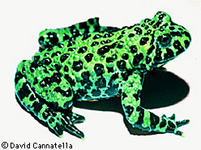
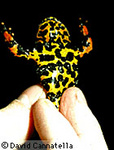
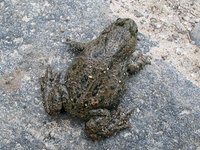
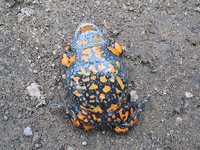
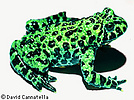

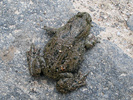
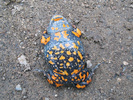


 Go to quick links
Go to quick search
Go to navigation for this section of the ToL site
Go to detailed links for the ToL site
Go to quick links
Go to quick search
Go to navigation for this section of the ToL site
Go to detailed links for the ToL site